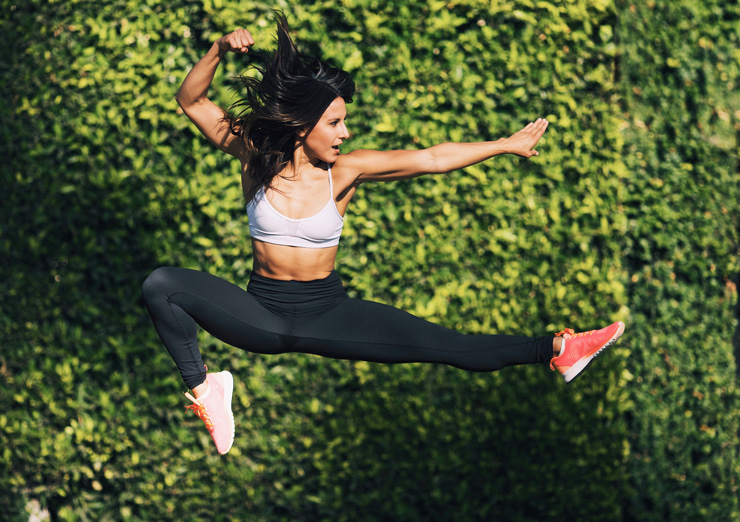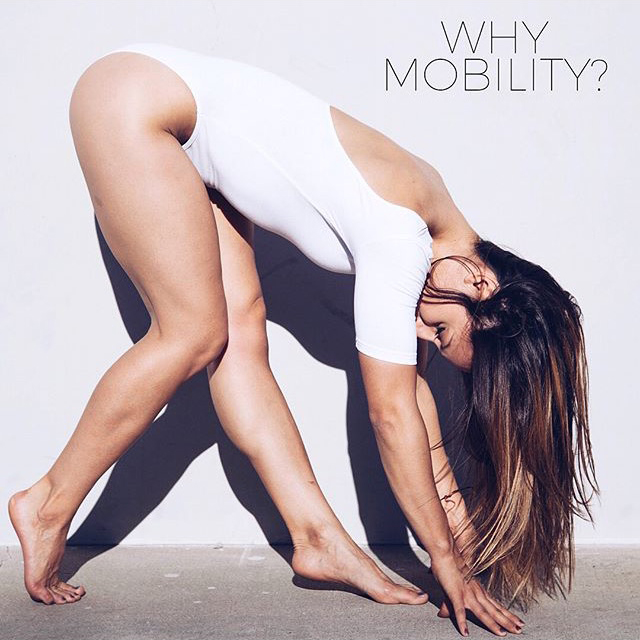Understanding the connection between mobility and longevity connects us to greater wellbeing and vibrancy
—
What comes to mind when you hear the term ‘physical therapy’? Is it only necessary when your doctor tells you to go? Only when you’ve just had surgery or incurred an injury? Do you think of things like ultrasounds, electrical pads that tingle and make you feel good? Or maybe you think more of exercises to strengthen your core, increase balance and improve mobility?
Whatever it is that comes to mind, the most common theme I hear amongst most people seeking either physical therapy, chiropractic treatment, or massage therapy is that they’re looking for someone to ‘fix’ them.
The problem with relying on another person to ‘fix’ you, is that you are no longer in control of whatever the problem was to begin with — and therefore it will most likely return.
When the problem, pain or injury is coming from our own body, the one body we will move through this life with, it is essential that we start to rely on ourselves to fix the problem! This is not like taking your car or computer to go get serviced or indeed, fixed. Your car and computer are ultimately replaceable. Your body…not so much.
As a Doctor of Physical Therapy myself, I am not saying we do not play integral roles in healing, pain relief and prevention. Of course, we do! But, we truly help when we become the facilitators, NOT the person who will fix you. A facilitator will be able to help identify the reasons behind the problem and then guide you toward solutions that would be most beneficial. Yet, it is then up to YOU to then choose whether you think those solutions will truly benefit you in order to implement them into your life.
Here’s the thing, if you do not understand why the exercises would be of benefit to you, or you’re not really feeling the pain anymore, why keep doing those boring therapy exercises?!
If you don’t understand the ‘why’ you’re implementing something into your life, I guarantee it will not become habit within your life.
Think about some of the habits that you currently have. I would assume brushing your teeth falls into the ‘daily habits’ category. Why? Because you know that daily maintenance on your teeth helps to prevent cavities, root canals and basically protects your smile. Not to mention, most go see a dentist at least twice a year for a checkup to make sure those teeth are still intact.
Now I want you think if there are any daily habits you implement to prevent pain, injury and possible surgery. Proper sleep, healthy eating and drinking plenty of water definitely contribute on a broader scale. But can you think of anything you’re doing daily to specifically prevent pain and injury and improve the active longevity of your body? Some people implement daily foam rolling or try to get to the gym 3-5 days per week. These are both good, but they are not very specific to your body’s needs, nor are they implemented by the majority of the population.
What if you had a toolbox that could help to prevent pain and injury, reduce doctor visits, reduce the need for medications that merely masks symptoms while creating other issues, and truly give you the tools that are individualized to your unique body?
Would you use it? But before you could answer that question, you would need to find your ‘why’. For me, I am fortunate enough to have grown up active my entire life. My parents set a great example as they have always loved taking care of their bodies and to this day, can still water ski well into their sixties. So, naturally, a love for movement, tuning into and listening to my body came easy. But, it wasn’t until I went through physical therapy school that I truly began to understand my ‘why’.
During grad school, I met a man named, Steve, who was born with Cerebral Palsy (CP). CP is due to abnormal brain development and affects body movement and muscle coordination. Though sharp as a tack, Steve has lived his whole life in a wheelchair. At 35, he was living alone, finding his own public transportation and completely independent. To paint the picture a little more clearly, Steve also is extremely difficult to understand, as the muscles in his mouth and tongue do not work well. Watching Steve slide down his chair to the floor to put on his shoes and socks looked absolutely painful with his contracted joints and ankles going different directions. The whole task took about 20 minutes to perform. When he got too heavy to pull himself back into his wheelchair, he took up assisted swimming to lose weight. Steve literally uses every ounce of his body to accomplish tasks most of us take for granted. Unfortunately, most people hardly even use their body’s full capability, nor take care of what movement they currently have so it doesn’t go away.

I also got to see gold medalist triathletes with bilateral amputations above the knee, people with Junior Rheumatoid Arthritis and extreme limited range of motion still running and doing yoga, and people with Parkinson’s doing yoga, walking or riding the bike as much as their bodies could. Our bodies are the most amazing machines. They are truly an amazing gift and we have much to be grateful for.
No matter what the limitation, no matter what the set-back, you have the capability to move out of pain, injury and live a longer and healthier life.
I’m grateful for these incredible individuals who have helped shape and inspire my ‘why’.
Our bodies have the ability to adapt. This is the reason most of us stiffen up over time. For example, our bodies adapt to sitting in chairs and cars more and sitting cross-legged on the floor less. A recent study reported that in cultures and religions that kneel to pray often throughout the day actually have reported less cases of osteoarthritis than cultures that don’t. This is not surprising, as our joints need to move through their full range of motion to remain lubricated within the joint and maintain healthy function.
Just as our bodies can adapt into restrictions, they can also adapt out of restrictions. Do not forget, you once were able to eat your toes, as this is a developmental milestone at 5 months old, before crawling or walking. Not that we should be working to try to eat our toes again, but it is crucial to maintain the health of our joints to reduce the chance of injury, pain, and surgery. Strength exercises are great, but just as a baby does not stand or walk before they stick their toes in their mouth, it is important to improve the mobility of the body first.
The only way to improve mobility is to move into it.
Breath, foam rolling and massage are all tools to reduce stress, tap into the parasympathic nervous system (rest and relaxation), and can temporarily begin to relax mobility restrictions. Yet, we must move, and we must move daily to improve current restrictions and prevent future ones. Just like brushing your teeth, you can easily integrate mobility into your life. For example, I have two mobility exercises I can do in bed first thing in the morning, two exercises I do when I’m working at my desk, and two before and after I workout. Without carving out additional time in my day, I just integrated up to 6 mobility exercises into my day that I can begin making a habit.
To teach you how to do the same, I created The Mobility Method. The method will take you through a screening process where you begin to easily assess your own movement and find where your body is most restricted. It is then filled with tools to guide you to the mobility exercises that are needed for your individual body. I created the program as a guide. Every body is different and unique. There is no one-size-fits-all plan for a single diagnosis or injury. Moreover, there is an old saying in my world that goes, “Where you think it is, it ain’t.” This means, the location of pain does not determine the cause of the problem. For example, low back pain can be due to tightness within the hips, upper back or even big toe! The body is truly all connected and it is up to us to move into it to free us of pain and injury.
To help you get started, I have created a video with my 7 favorite mobility exercises that address restrictions from head to toe. To further guide you along, I will be providing my best educational tips and even begin to guide you toward a more efficient breathing pattern. I hope you will dive in with me, explore your body, and give back to it a little more each day!
Watch Jen’s short introduction to her philosophy and connection to mobility
You may also enjoy reading The Genius of Flexibility by Bill Miles
